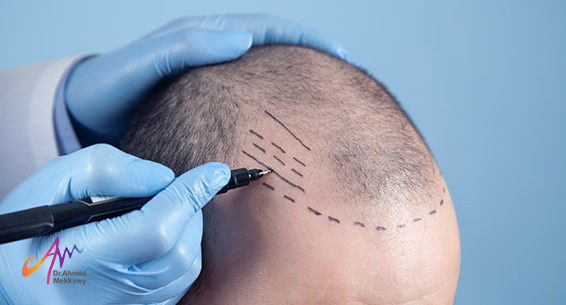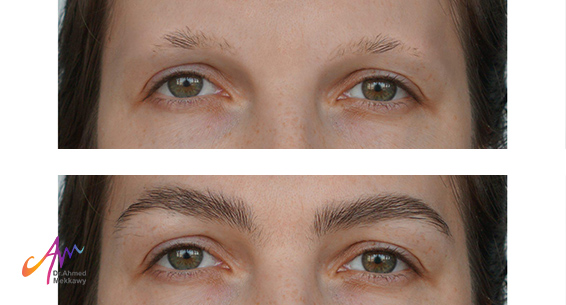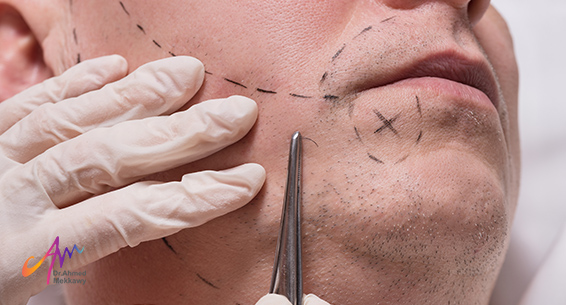Hair Transplantation

Hair Transplantation
In just a few hours, you can permanently forget about hair thinning, hair loss, and baldness with effective results through hair transplantation. Learn about the procedure and its characteristics in this article.
What is Hair Transplantation?
Hair transplantation is a medical and cosmetic procedure that allows for hair restoration in areas affected by hair loss, thinning, and baldness; through various natural hair transplantation techniques, such as follicular Unit Extraction (FUE), Follicular Unit Transplantation (FUT), or Direct Hair Implantation (DHI). Each technique has its features and reasons for being chosen, depending on the treatment condition and providing the best possible results. The process involves the removal of small portions of hair follicle-carrying cells from the back of the head (the donor area) and redistributing these follicles to the areas that require coverage and treatment.
Hair loss and causes:
Hair loss can primarily result from one or more of the following factors:
1. Aging.
2. Changes in hormonal levels.
3. Family history of baldness.
The earlier the hair loss starts, the greater the expected degree of baldness.
Candidates for Hair Transplantation:
You may be a good candidate for hair transplantation if you are in good health and have sufficient hair growth in the donor area, typically at the back of the head, to cover the areas that need treatment. The donor area is where the plastic surgeon harvests hair follicles to transplant them into the areas that need treatment.
Other factors that determine whether you are a suitable candidate include type, texture, density, and hair color. Plastic surgeons use several techniques for hair transplantation, and the doctor may employ more than one technique during the procedure to achieve the desired results. The doctor aims to fintd the most suitable technique for your case to achieve the desired outcome.
However, some cases may not be suitable for hair transplantation due to:
1. Chronic dermatological conditions causing permanent hair loss.
2. Chronic heart or liver diseases.
3. Insufficient hair availability in the donor area.
4. Regular use of certain medications causes hair loss as a side effect; you can undergo the transplant after changing or discontinuing these medications.
5. Undergoing specific treatments causes hair loss, such as radiation therapy or chemotherapy; in this case, you can consider transplantation after completing the prescribed treatment period.
Consultation with Dr. Ahmed Mekkawy before Hair Transplantation:
In your initial visit, Dr. Ahmed Mekkawy, a plastic surgery and hair transplantation consultant, will assess your condition and determine the extent of hair loss or baldness you are experiencing. He will also inquire about your family's medical history to ascertain if baldness genes are presenting in your family. Additionally, he will ask about your overall health and discuss your expectations regarding the results of transplantation.
Certain health conditions may pose complications during the transplantation process, such as hypertension, blood clotting issues, or the likelihood of developing deep scars. You will discuss all these factors with the doctor before deciding whether to undergo transplantation.
Ensure you inform the doctor if you are a smoker or regularly take blood-thinning medications like aspirin. You should stop smoking before and during recovery, and stop blood-thinning medications before transplantation.
The doctor will discuss the type of anesthesia during the procedure, the location of the transplantation, and the potential side effects of hair transplantation that you may experience.
Dr. Ahmed Mekkawy will address all your questions before the transplantation and ensure you understand the details and steps involved in the procedure, the recovery period, and what you can do before the transplantation to minimize the risk of side effects.
Cost of Hair Transplantation:
The cost of hair transplantation varies depending on several factors, including:
1. The number of follicles to be transplanted to cover areas with gaps or thinning.
2. The size of the areas that require hair transplantation.
3. The type of anesthesia used during the procedure.
4. The technique used for hair transplantation.
Additionally, there may be additional costs, such as accommodation and transportation, if you are coming from another country. The cost of hair transplantation with Dr. Ahmed Mekkawy starts at $1500 and varies based on the mentioned factors.
Risks and side effects of Hair Transplantation:
Hair transplantation procedures are highly safe and generally have minimal side effects. The likelihood of experiencing side effects and the recovery period vary depending on each individual's case and his ability to recover.
As with any medical procedure, the risk of infection is minimal and usually regards the patient not following the doctor's post-operative instructions diligently. The recovery period is a crucial factor that determines the success of hair transplantation and the survival of the transplanted follicles.
Preparing for Hair Transplantation:
Dr. Ahmed Mekkawy will provide you with instructions to follow before undergoing hair transplantation, including:
1. Follow the necessary dietary guidelines.
2. Stop smoking for at least a week or two before the procedure because smoking can increase blood viscosity, which may negatively affect the transplantation.
3. Avoid the intake of some vitamins and supplements.
4. Avoiding the intake of blood-thinning medications.
Types of Anesthesia Used:
Local anesthesia is usually employed when using hair transplantation techniques that do not require surgical intervention. However, in cases where the doctor makes a surgical incision, general anesthesia ensures you feel comfortable during the procedure.
Hair Transplantation techniques:
The steps involved in hair transplantation may differ depending on the technique used:
1- Follicular Unit Transplantation (FUT) Technique:
This used to be the prevailing method for hair transplant extraction for years, but with the advent of the Follicular Unit Extraction (FUE) technique, which does not require a surgical incision, FUT has become less common. Here are the steps involved in FUT hair transplantation:
Before the procedure: The areas where hair transplantation is desired are determined, along with the number of follicles needed to cover these areas. The donor area (usually at the back of the head) is selected, and the patient is anesthetized with general anesthesia.
Step One: The designated portion at the back of the head (the strip) is surgically excised.
Step Two: The surgical incision is closed by suturing the skin edges together.
Step Three: The strip is divided into tiny grafts, each containing one or two hair follicles.
Step Four: The tiny grafts are transplanted into the areas where hair transplantation is desired.
Finally, the donor area is covered with bandages to complete the transplantation process.
2- Follicular Unit Extraction (FUE) Technique:
Before the Procedure: The hair must be cut or shaved very short to facilitate precise extraction of follicles from the back of the head and their precise transplantation in the areas that need coverage.
Preparation: The areas to be transplanted and the number of follicles to be transplanted in each area are determined. The donor area at the back of the head is selected, sanitized, and locally anesthetized.
Step One: Hair follicles are individually extracted one by one from the donor area.
Step Two: These follicles are placed in specialized containers until the transplantation.
Step Three: After completing the follicle extraction, the back of the head is covered with medical dressings to stop bleeding.
Step Four: Tiny channels are opened in the areas where hair transplantation is desired after sanitizing these areas
Step Five: The hair follicles are transplanted individually into these channels.
Direct Hair Implantation (DHI) Technique:
This technique is mostly an implementation step of the FUE technique, but it is performed using a Choi pen machine, which directly extracts the follicles and transplants them immediately into the desired areas.
Recovery Period after Hair Transplantation:
- Any pain or feeling of tightness or swelling in the scalp can be managed with some mild analgesics prescribed by Dr. Ahmed Mekkawy.
- Dressings are usually removed the day after the transplantation. You can start washing your hair by following Dr. Ahmed Mekkawy's instructions on how to do so after the transplantation.
- Avoid any strenuous physical activity for at least three weeks, as intense physical exertion increases blood flow to the head and may lead to an increased risk of bleeding.
- Dr. Ahmed Mekkawy ensures periodic check-ups to ensure your proper recovery until the final results appear.
Results of Hair Transplantation:
You can return to work within a few days after the transplantation and resume your daily activities as usual, but avoid intense physical exertion and follow the doctor's instructions. The results of hair transplantation will begin to show within a period ranging from six to eight months. During this time, the transplanted hair will start growing naturally as part of the area where it was transplanted. Afterward, you can cut, style, or make any other changes to it.
So, have you ever considered getting a hair transplant?
For more information, contact us or schedule a consultation appointment with Dr. Ahmed Mekkawy.
This content has been reviewed by Dr. Ahmed Mekkawy, a consultant in cosmetic surgery, body contouring, and natural hair transplantation.

.jpg)
